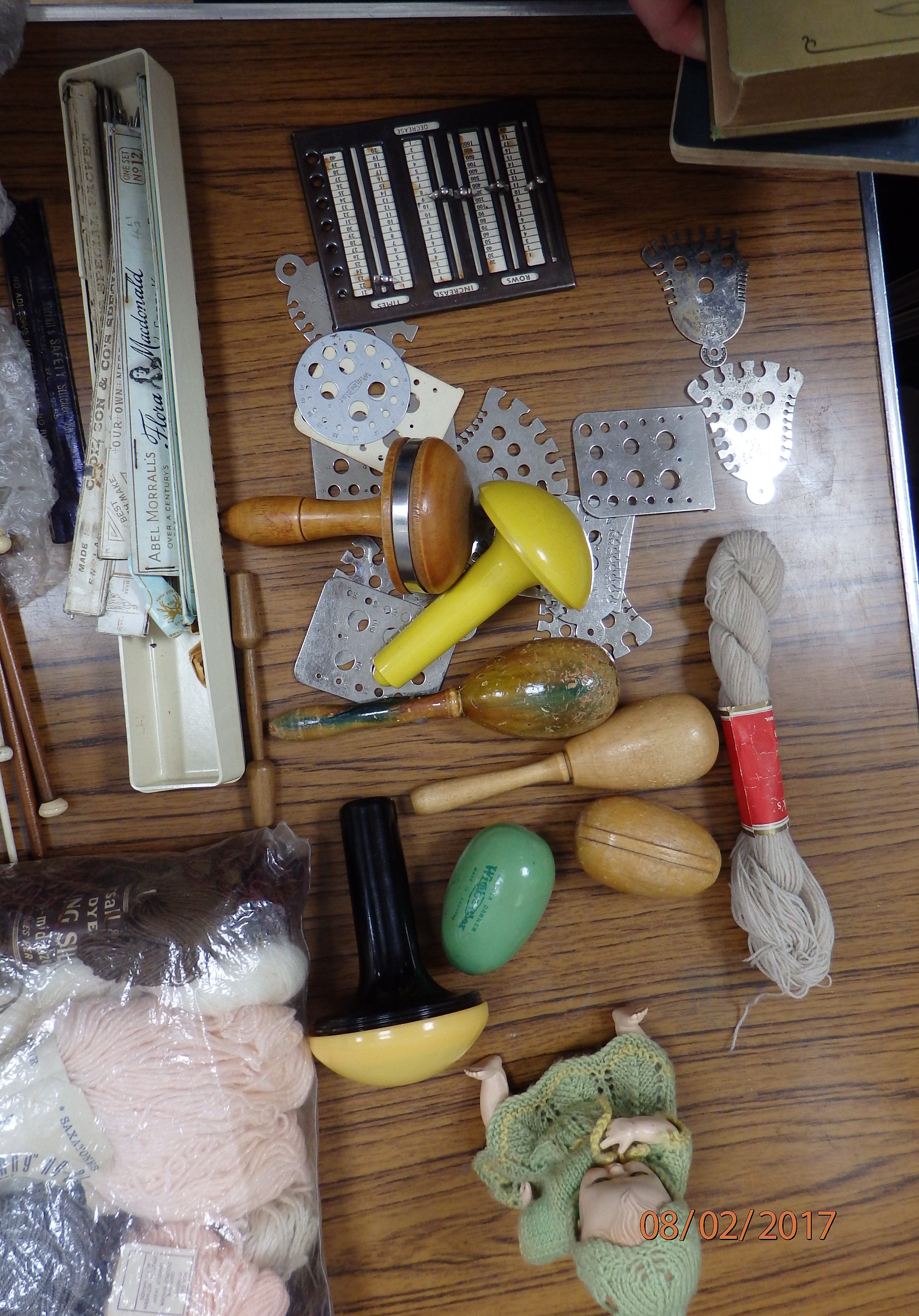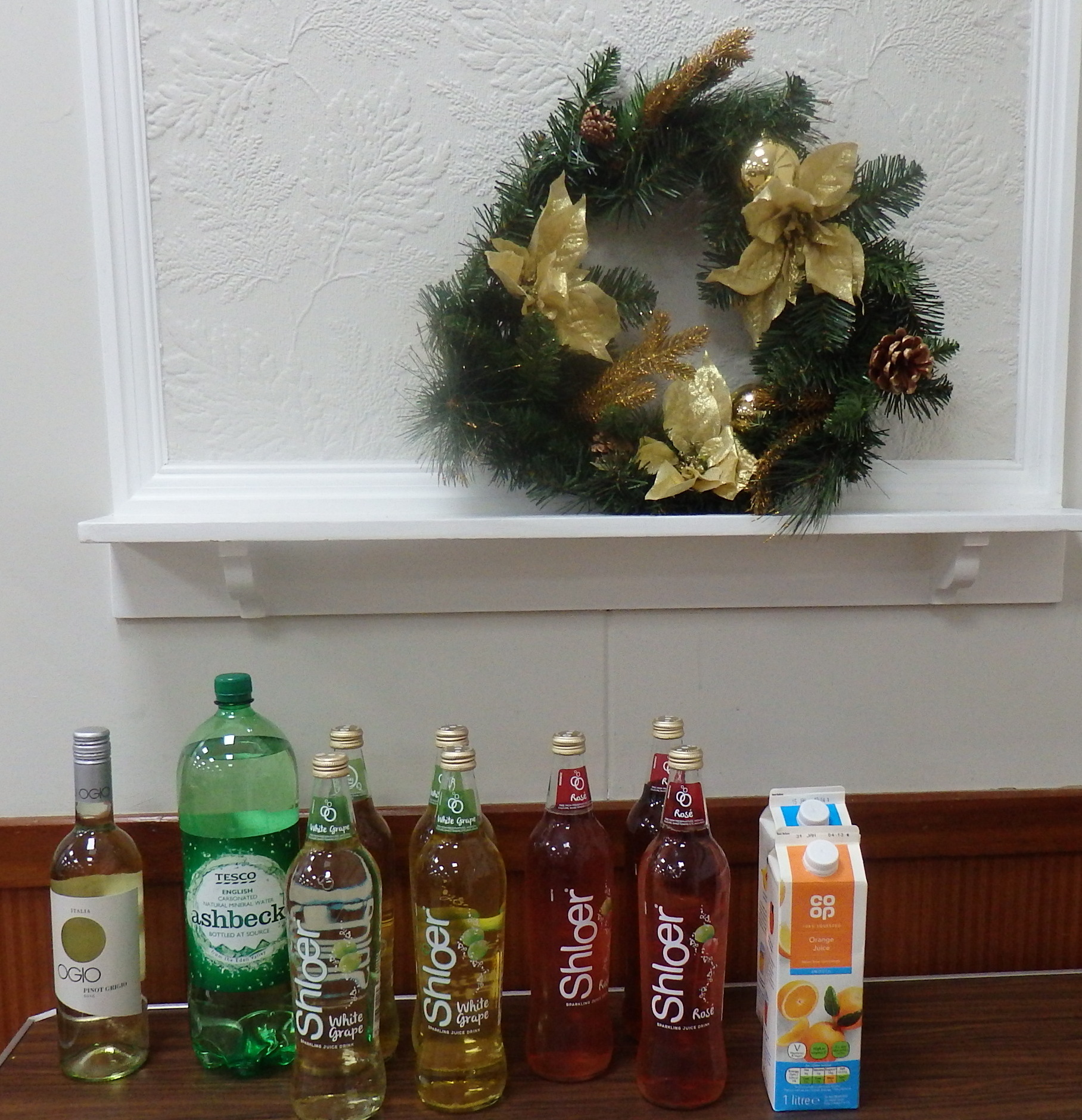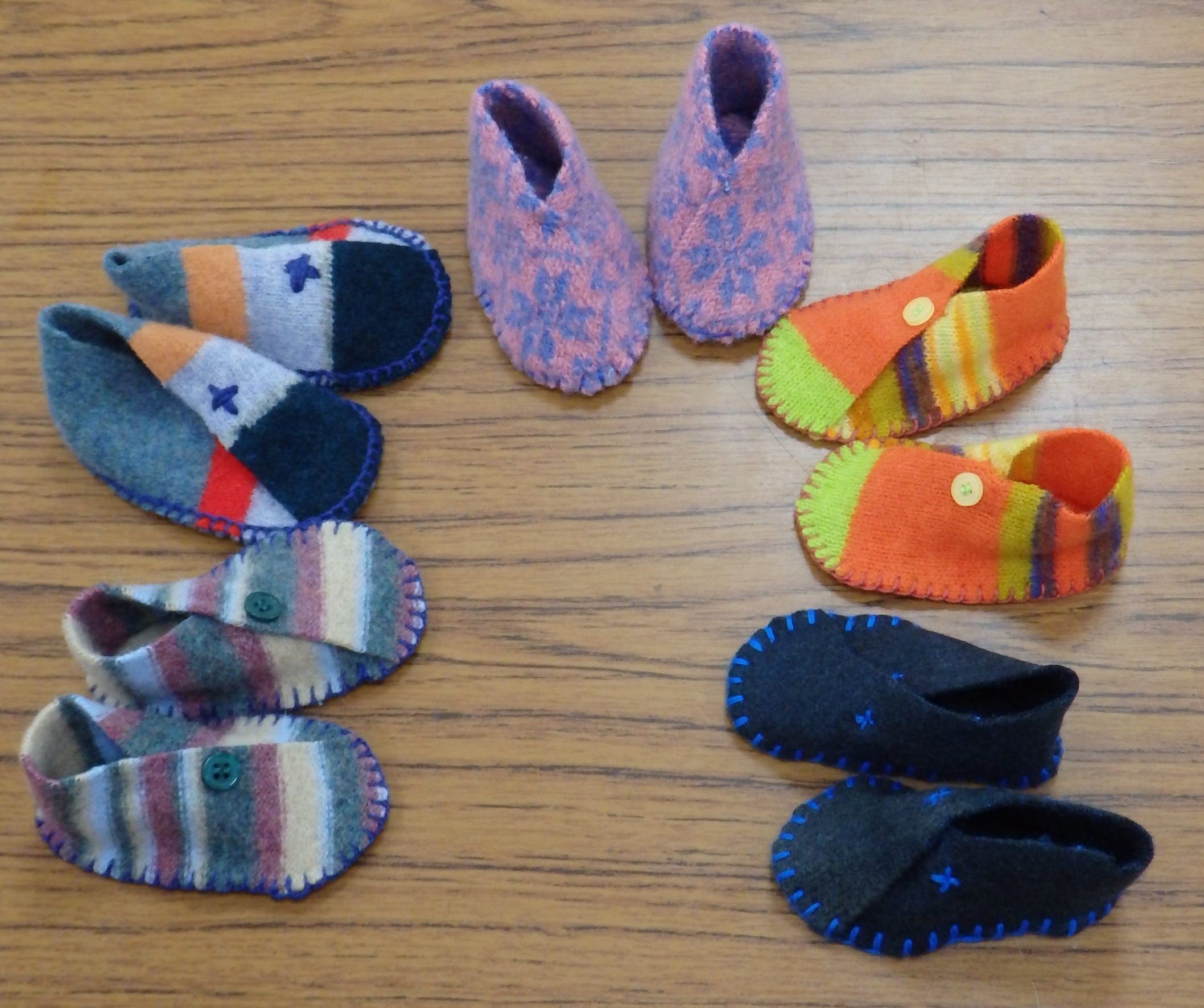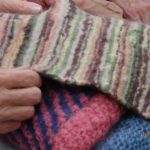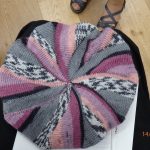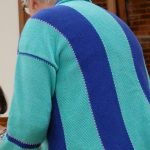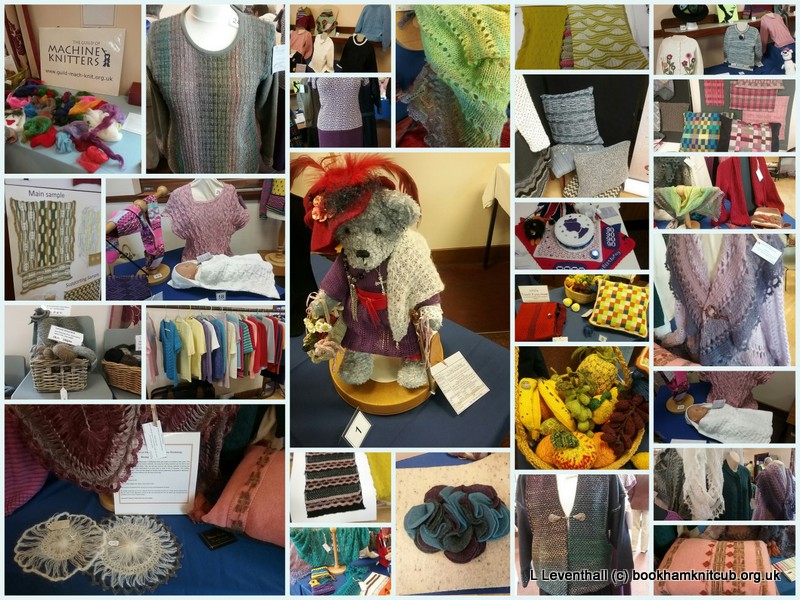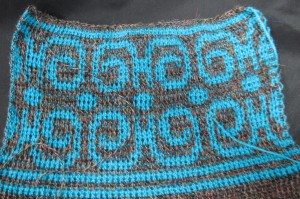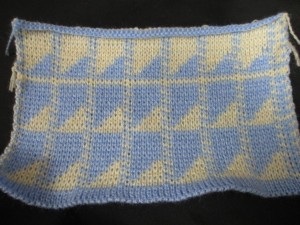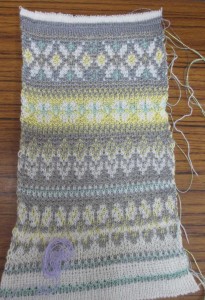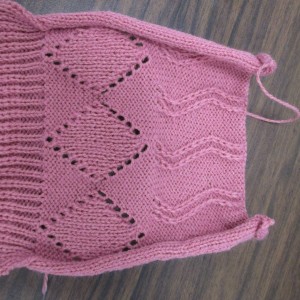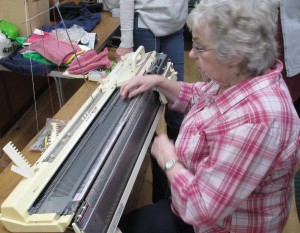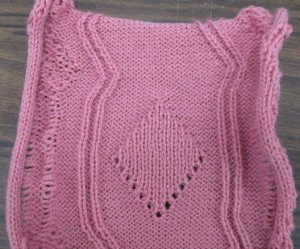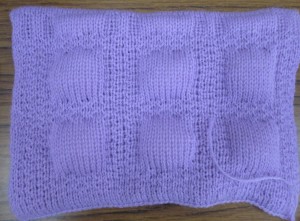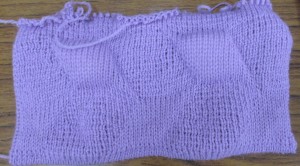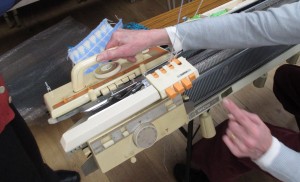This month we welcomed Joyce Meader who gave us a talk on Knitting from 1800 to around 1918.
The talk was extremely lively and we would like to thank her for such an excellent presentation. Apparently, the first knitting patterns were first produced before 1800 although these can be quite difficult to follow today as both the sizing and pattern writing style was fairly arbitrary. One she showed us was written as a single long paragraph.
Joyce brought along a range of knitted items – some original and some she had made from the vintage patterns. Many had stitches that were no longer in regular use. And, the ladies of the 19th Century were often tiny as were the garments, in particular, a little shoulder warmer which looked as if it would only fit an 8-year-old now.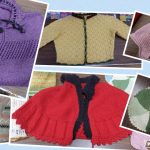
In addition to the garments, she regaled us with stories of making some of these items, particularly a beret where the tension and needle sizes were ambiguous and the hat turned out giant sized.
The knitting accessories she brought along were collected from a range of sources, some from eBay and others were donated. Many of us have some of these in our sewing boxes even now and sometimes do not know what they are. But manny are familiar – the needle gauges which come in a range of shapes and sizes and an egg shaped wooden item which came with a tiny hook designed to mend runs in wartime stockings (which were in short supply and rationed).
